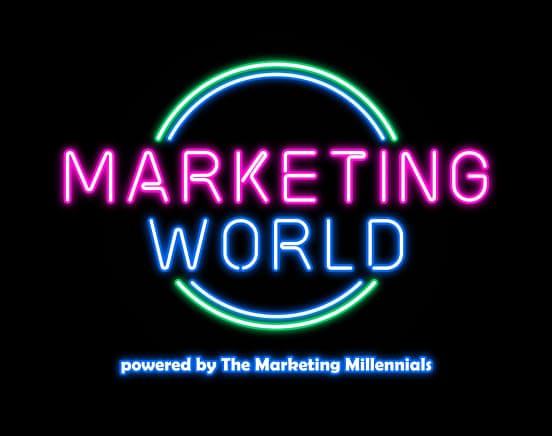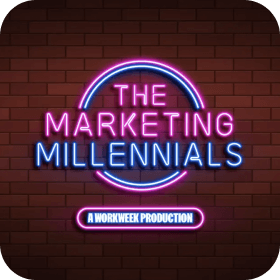I am STOKED for you to meet today’s guest, Jay Baer.
The author of 6 bestselling books and founder of 5 multi-million dollar businesses, Jay is the Marketing and customer experience expert we all need to take notes from.
Let’s see what Marketing wisdom he dropped on The Marketing Millennials Podcast, in his own liiiightly edited words.
1. How speed is impacting Marketing:
“One of the things that never stops is the acceleration towards rapidity.
I’ve been doing this for 30 years now and I’ve never heard a client, company, or consumer say it’s okay if you guys do that more slowly, nobody ever says that.
Expectations around speed always escalate.
What was fast 3 years ago is commonplace today. It’s one of the big challenges for business.
Ironically, as companies grow they have more processes and it actually slows them down. They get bigger and slower, which is counterintuitive.
This is a huge issue for marketing because the most recent report from Salesforce from last fall, suggests that between 80 and 85% of companies globally, the Marketing department is responsible for customer experience.
Why is that an issue?
Of all the different things you can do from a customer experience perspective to increase brand value, responsiveness is one of the most important.
2/3rds of customers say that speed is as important as price and half of all customers will pay substantially more if they can get whatever they need faster (that’s why Amazon is CRUSHING).
That’s both faster delivery and faster interaction with the brand.
So a lot of organizations, the Marketing team has a relationship with the frontline customer service team, whether it’s phone, email, chat, or social.
It is imperative to be quicker in all facets.
People will just leave if you’re not as fast as they expect you to be (THIS).
Level up your marketing game
Zero BS. Just fun, unfiltered, industry insights with the game-changers behind some of the coolest companies from around the globe.
No spam. Unsubscribe any time.
2. How Marketing and CX should work together:
If marketing is making promises that the customer experience can’t match, then you’re setting yourself up for customer dissatisfaction and churn.
We spend way too little time, money, and effort on customer retention.
Marketers are so conditioned to focus their energies and talents on customer acquisition, they just don’t put enough effort into customer retention.
Even though 100% of the business professionals in the world know that mathematically it’s easier to grow a business if you don’t lose customers out the back door.
There is nobody who is going to say that churn’s good. Nobody ever says that, but yet think about your own marketing department, how many meetings you have about customer acquisition and how many meetings you have about customer retention.
Think about how much content you make about customer acquisition, vs. how much content you make for retention. Think about how many social media campaigns you do for acquisition and how many you do for retention (incredibly good point).
That’s certainly an area where marketing and CX need to cooperate because the customer experience team are the ones who know what the customer needs from an informational and reputational perspective.
There’s this concept I have called the uncertainty gap, which is the distance between what you know about your business and what the customer knows (i LOVE this).
One of the most important things you can do as a business is close that gap.
Uncertainty prevents purchases, creates angst and churn.
The customer experience department and the Marketing department should be working together to close that gap, the more you can inform customers and do it quickly, the better off you’ll be.
3. What your first touch should be:
Here’s a crazy stat. It’s from Gartner.
Nearly half of all Millennial B2B buyers prefer an entirely seller free experience (are you one of those Millennial B2B buyers? I know I am).
They want to learn about the product, compare the product, demo the product, and buy the product without ever talking to a salesperson.
This whole idea of requesting a demo and someday we’ll call you back if we have time to give you a demo is dumb.
You’re much better off having a demo that is self-serving.
Watch the demo, it’s a video series, and then let us know if you have questions that aren’t answered by the demo. That’s the way to do it.
An interaction with a salesperson being more likely to close a sale is no longer true right now. There’s certainly very complex B2B scenarios where everything is bespoke and custom, and you can’t use demo videos.
But that’s the exception, not the rule.
I always ask my clients what justification do you have for a customer not being able to give you money without a human conversation? What’s your actual justification for that?
It’s not more efficient. It’s not more cost effective for the business.
4. One of the biggest problems with Marketing:
One of the biggest problems with Marketing as a discipline is that Marketing is responsible for creating information that resonates with the customer. Cool.
Except for the fact that marketing never talks to the customer, not in any routine or comprehensive way.
You might do some interviews, focus groups, or surveys, but Marketers are not on the phone or answering emails from real customers all the time.
So the people who actually understand customer pain points and know what customers need and want are the service teams. (And at some level the sales team.)
If as a Marketing organization, you’re not tapping into those parts of your company and saying, what are customers saying? What are they struggling with? What do they love?
And using that as the raw material for what you’re saying as a Marketer, you’re missing a lot of opportunities.
5. A lesson from the 80s:
My very first real job, I was an intern at a Marketing and comms firm in Phoenix in the summer of 1988.
My boss who ran the shop called me in the first week and said, I want you to always remember something.
I was stoked, the CEO of the company was talking to me as an intern.
He said, I want you to always remember, we don’t learn anything of value for our clients sitting in this office (BOOM).
I never forgot that because the point is that Marketers sitting in an office talking to Marketers, doesn’t give any insights about the actual consumer.
A lot of businesses went to hybrid work but are slowly moving back to in-office schedules, because executives want to make sure their teams are actually working.
They want to make sure you’re there, being collaborative, and in conference rooms. and
Whereas my old boss’ perspective is to get out of the office. He didn’t want to see us in the office, he wanted us to go visit our clients.
And more importantly, go visit the clients of our clients. Go observe them in the wild, watch customers buy, watch customers use (the fundamentals, baby).
That anthropological approach to Marketing is incredibly valuable.
Since the entire rise of the internet, one of the things that has really hurt Marketing as a discipline is that we have so much tech at the click of a button that we don’t observe customers in the wild very much anymore.
That makes us fundamentally worse as Marketers
6. Bite sized tip:
If your marketing is not working as well as you think it should, in almost every case the root problem is that it’s not relevant enough for your consumer. So you have to make it more specific.
Broad is flawed (might get this tatted on my ankle).”



